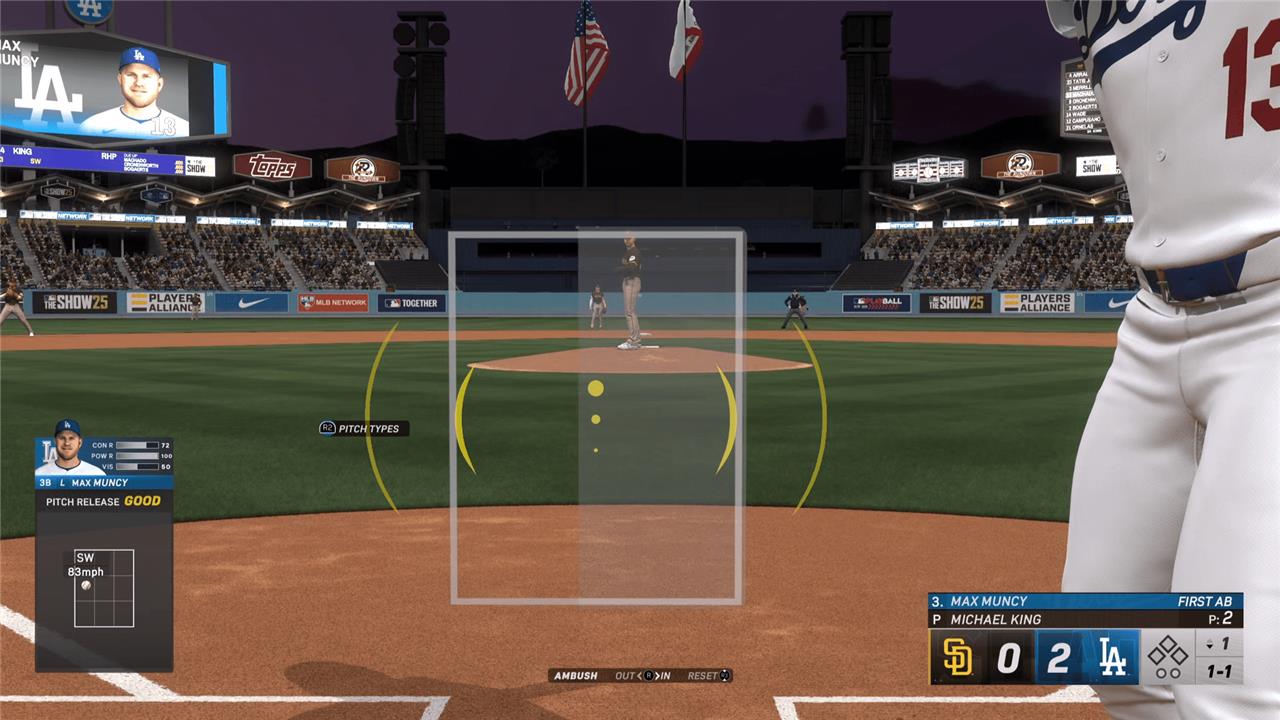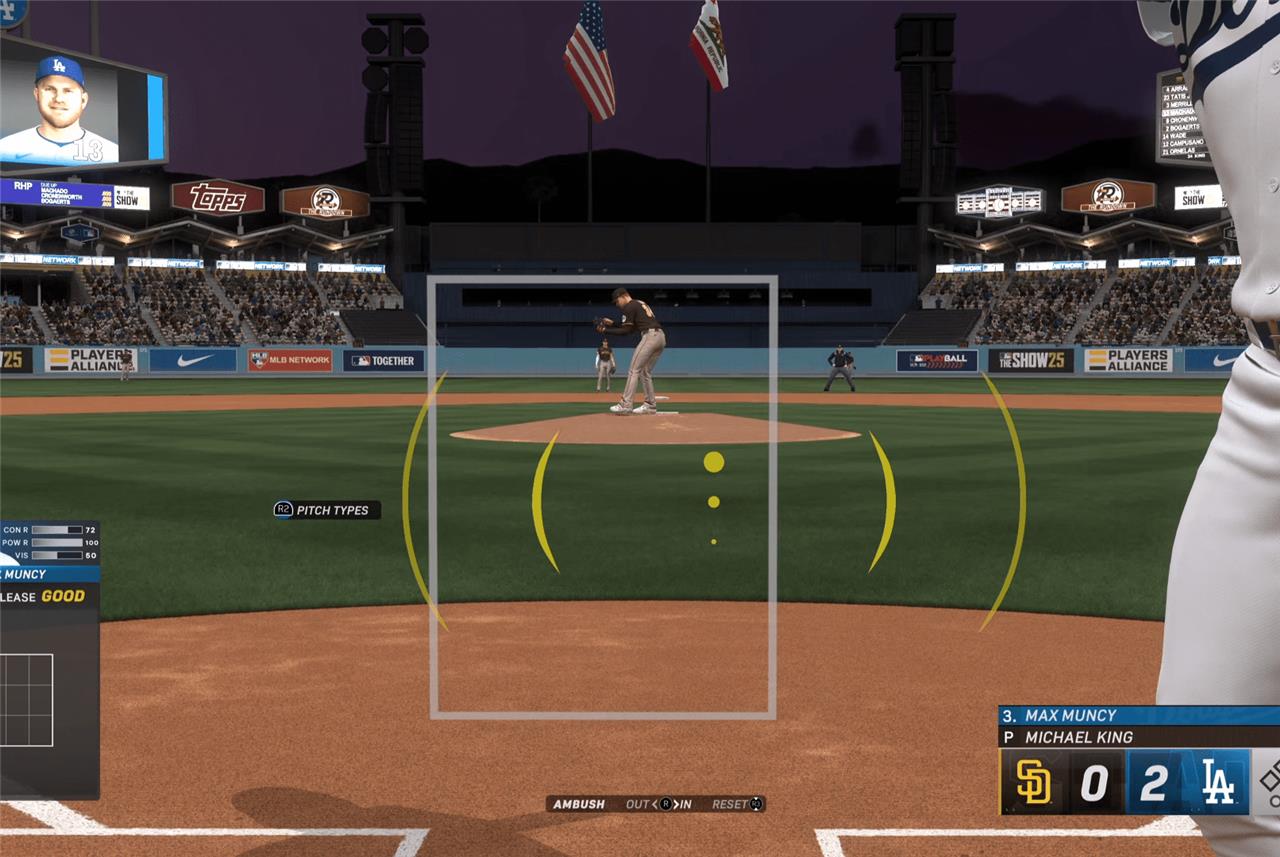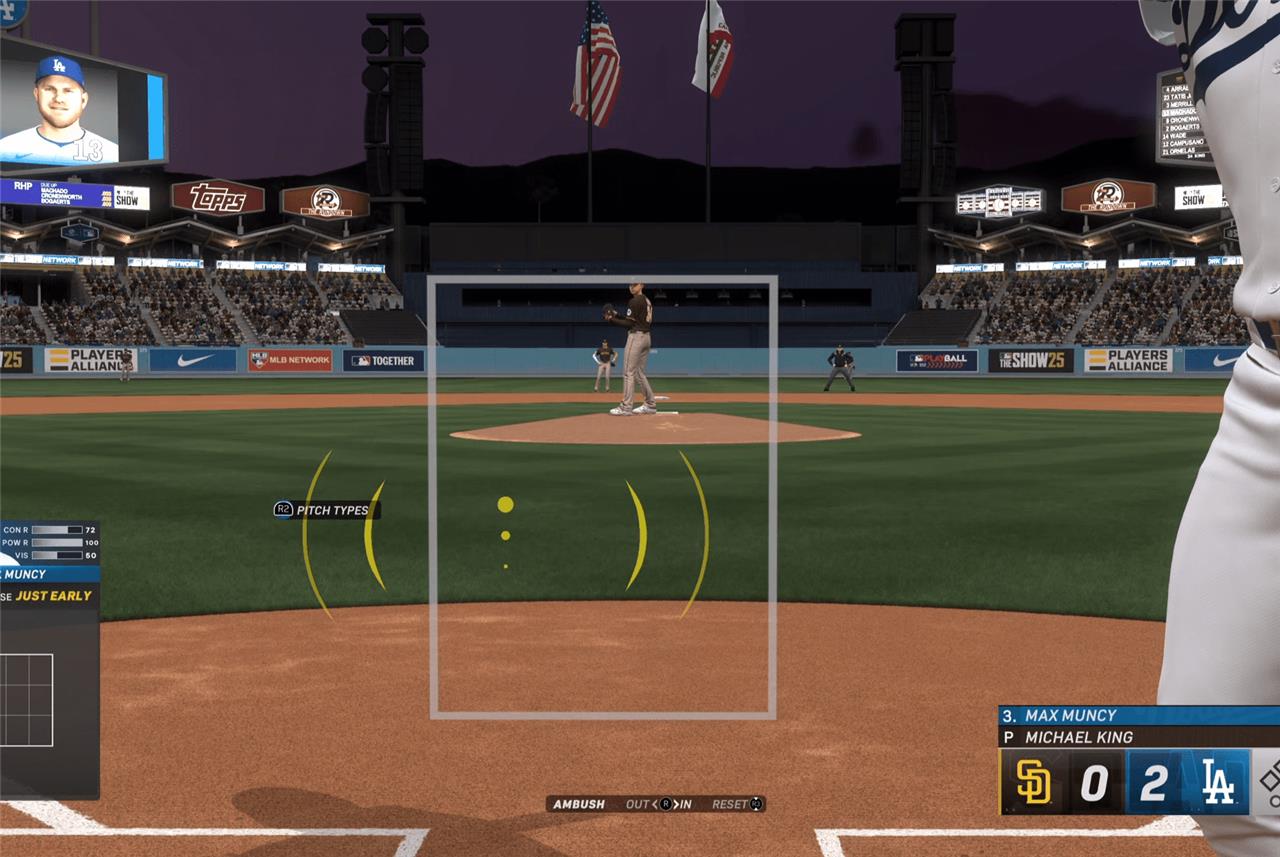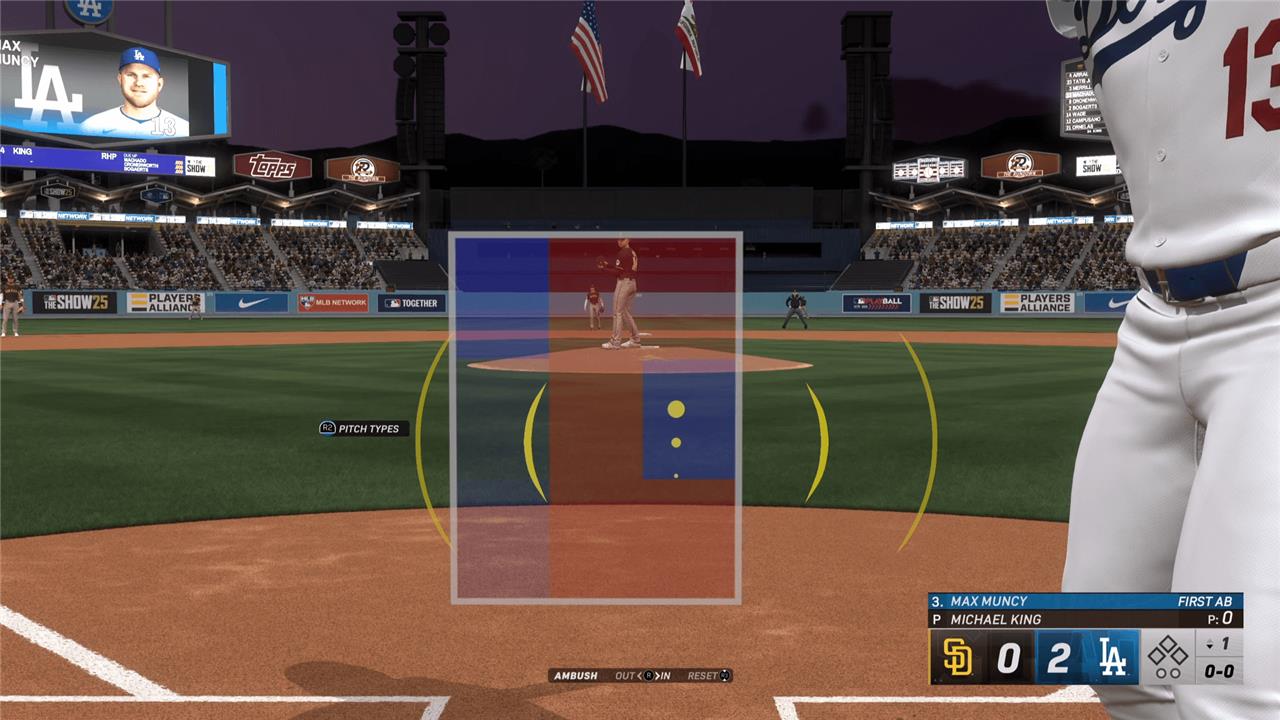Step up to the plate with a new edge in MLB The Show 25: Ambush Hitting. This innovative mechanic lets you predict the side of the plate the pitcher will target, expanding your hitting window and boosting your chances of a solid hit-if your guess is right. But beware, a wrong call shrinks your margin for error, turning every at-bat into a thrilling game of risk and reward. Master this feature, and you could turn the tide of the game with a single swing.
How to use Ambush Hitting in MLB The Show 25
Ambush Hitting in MLB The Show 25 is a strategic mechanic that allows you to predict which side of the plate the pitcher will throw to before the pitch is released. To use it, move the right stick left or right to select the side you anticipate the ball will come to; this activates Ambush Hitting and enlarges your Plate Coverage Indicator (PCI) on that side, making it easier to make solid contact if your guess is correct. If you guess wrong, the PCI shrinks, reducing your hitting effectiveness. This feature is only available with the Zone Hitting interface and can be toggled off if you prefer a traditional batting experience. Mastering Ambush Hitting involves reading pitcher tendencies and choosing the right moments and batters to employ this high-risk, high-reward approach effectively.
The basics of the Ambush system are extremely simple. When you’re at the plate, you can push the right stick either left or right – ahead of the pitcher releasing the ball – to predict which side of the plate the pitch is headed toward. When you guess a side, you’ll notice that your hitting indicator gets bigger on that side of the plate, and smaller on the other side, making contact easier on the side you guessed at and more challenging on the side you didn’t. If you change your mind and don’t want to guess a side after all, you can click the right stick (aka the R3 button) to reset and deactivate your guess.

Of course, a mechanic that simple allows plenty of room for adjustments and mind games, so here are a few tips on how to use the system to your advantage.
To answer the biggest question first: No, you don’t have to use the Ambush system if you don’t want to. There’s no penalty for not using it – it just avoids either the bonus or the penalty associated with your guess. As for when you should use it, there are a few different ways to approach that.


First, when you’re in a count where you can afford to be choosy about what you swing at, like 0-0 or 3-1, you could guess toward whichever side of the strike zone you tend to be better at hitting in, and hope for a pitch there. In other words, use Ambush Hitting in situations where you can be picky at the plate, and focus on just one area of the strike zone.
For example, I often open at-bats with Ambush Hitting activated on the outside part of the plate for the first pitch, and just sit on low breaking balls. If the pitcher throws a low breaking ball away, I tend to crush it. If they don’t, I just take the pitch and move on, repeating this until the pitcher gets ahead in the count. Additionally, if you have the hot zones turned on while hitting, you could use Ambush Hitting on the side of the plate where your hitter has more hot zones. But this is also best used while ahead in the count, since you can’t be so picky with two strikes.

Another option would be to follow the trends of the pitcher, or player, you’re facing. Pitchers sometimes favor one area of the strike zone, especially in matchups with certain hitters, so you could guess the side they tend to prefer. Even more useful, though, is the fact that many human players online have particular pitches that they turn to in high-pressure situations, regardless of the pitcher they’re using. Pay attention to the frequency with which your opponent uses certain locations, and the situations they use them in. Does this person like to start lefties with a fastball up and in? Is a low curveball their main strikeout pitch? Observing these patterns will help you with Ambush Hitting (and with hitting overall).
In general, don’t use Ambush Hitting in two-strike situations unless you are extremely confident in your read on the opposing pitcher. It’s a risk-reward scenario, and it’s usually better to approach your at-bats more defensively (even when using the contact swing) when you’ve got two strikes on you. But Ambush Hitting can give your offense a big boost earlier in the count if you use it right – especially if you pay attention to what your opponent likes to throw.
How can mastering Ambush Hitting give me an edge over tough pitchers in MLB The Show 25
Mastering Ambush Hitting in MLB The Show 25 gives you a strategic edge over tough pitchers by letting you predict the side of the plate where the pitch will come before it’s thrown. Successfully guessing the pitch location enlarges your hitting window and PCI (Plate Coverage Indicator), making it easier to make solid contact and even increase your chances of a home run. This aggressive approach can disrupt a pitcher’s rhythm, forcing them off their comfort zone and gaining you early momentum in the at-bat. However, it requires keen observation of pitcher tendencies, game context, and selecting hitters with strong contact and vision attributes to maximize success. Used wisely, Ambush Hitting turns each pitch into a psychological battle, giving you a higher chance to capitalize on first-pitch opportunities and shift the game’s momentum in your favor.
How does ambush hitting disrupt a pitcher’s rhythm in MLB The Show 25
Ambush Hitting disrupts a pitcher’s rhythm in MLB The Show 25 by forcing them to second-guess their pitch selection and location. When you successfully predict whether the pitch will come inside or outside, your hitting window and Plate Coverage Indicator (PCI) expand, making it easier to make solid contact. This puts psychological pressure on the pitcher, as they must alter their usual approach to avoid being predictable and exploited. Over time, this can throw pitchers off their comfort zone and timing, as they try to outsmart your anticipation, ultimately giving you a strategic advantage at the plate. Conversely, if you guess wrong, your PCI shrinks, maintaining the risk-reward balance and keeping the pitcher engaged in a mental duel. This cat-and-mouse dynamic adds a fresh layer of strategy, making each pitch a psychological battle that can shift momentum in your favor.
